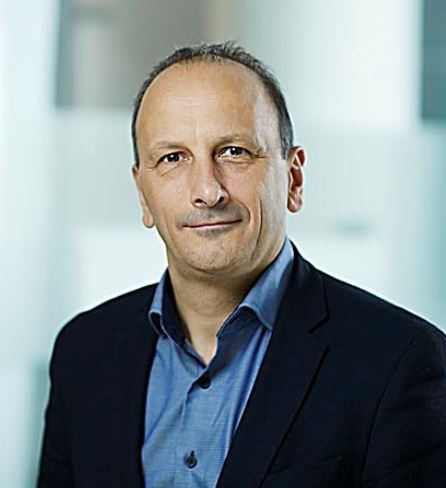This plasma-based technology slashes farms' nitrogen emissions
Nitrogen air concentrations are a concern in the Netherlands, with most of them coming from livestock farming. N2 Applied offers an innovative solution.
Published on November 15, 2024
Mauro swapped Sardinia for Eindhoven and has been an IO+ editor for 3 years. As a GREEN+ expert, he covers the energy transition with data-driven stories.
With Europe's highest nitrogen concentrations per hectare– in 2021, it exceeded 500 moles per hectare– the Netherlands must find a way out of this crisis and slash emissions. Most of these outputs are connected to livestock farming, which causes losses to the air in the form of ammonia. 80% of ammonia outputs originate from animal manure. With the help of air and electricity, this sidestream can be revalorized, helping farmers bring down their emissions.
N2 Applied offers a plasma-powered solution that allows farmers to produce on-farm sustainable fertilizer from manure using air and electricity. Plasma is the fourth state of matter, where electrons are ripped away from atoms, and the Norwegian company found a way to leverage it to treat animal slurry. This technology promises to transform farm practices on different levels and increase crop yields.
In 2010, founders Rune Ingels and Grete Sønsteby embarked on a journey to bring plasma technology to the market. In 2017, the company started expanding, scaling its technology from a lab scale to a proof of concept and setting up branches in Wageningen and the United Kingdom.
The company has come a long way. “We work with manure, which has many variations as a biological product. Animals' feeding and farming intensity heavily influence it. Cow manure is different than pig’s; in many ways, the learning curve was lengthy,” explains Henk Aarts, head of business development for Europe. Based in Wageningen, he has a long career in bringing farming technologies to the market.
Beyond Borders
Innovation doesn’t stop at the border! In Beyond Borders, we spotlight disruptive innovations worldwide that can help tackle societal challenges in the Netherlands. How are they making an impact? How can they help?
Treating slurry with plasma
The N2 treating unit comes in a 20-foot container. This setup includes an air compressor, a plasma system, an absorption tank to mix slurry and gas, and a control unit. The manure treatment breaks down into a two-step process. First, an electrical charge splits air molecules—which consist of 78% nitrogen—reformulating them into a nitrogen oxides gas, creating a plasma state similar to what happens in the air when lightning strikes. Then, this gas is mixed with the liquid slurry, facilitating absorption and triggering key chemical reactions.
“Nitrogen reacts towards nitrate, and H+ ions come free, lowering the slurry pH. The result is a nitrogen-enriched organic fertilizer that, given its lower pH, does not emit ammonia,” synthesizes Aarts. “In addition, it stops methane emissions and turns manure into an efficient fertilizer that does not have a penetrant smell anymore.” Field trials showed that the resulting fertilizer performs as well as chemical ones and outperforms untreated slurry by up to 40%.
A single unit can process the manure of 100 to 150 cows, depending on the housing and grazing. The system can work nonstop or be coupled with, if available, farm renewable energy production, allowing farmers to make the most of their power generation, too.
Through the control unit, N2 collects data that, on the one hand, is necessary for farmers to report their emissions to the authorities and that, on the other, improves operational performance and product development.

Henk Aarts
Business Development Director Europe at N2 Applied
With extensive experience bringing farming innovations to market, he joined N2 Applied in 2017 and helped them expand.
Dutch dairy and potato farms
Since the opening of the Wageningen branch, N2’s technology has arrived in the Netherlands and is finding its way to farms. In 2021, the Van Den Borne potato farm in Reusel started using one of their units. Having access to manure from nearby livestock farms, owner Jacob van den Borne wanted to use it as a chemical-free fertilizer. However, aware of the nitrogen output untreated manure would generate, he looked for an alternative. Aarts explains that plasma technology turned out to be an excellent fit, helping them craft “a better fertilizer.”
In 2023, N2 Applied partnered with GEA, a global system supplier for the food, beverage, and pharmaceutical sectors. A few months later, GEA announced the start of a partnership with global consumer goods Unilever. As part of this deal, the German company installs manure-enriching units equipped with N2’s plasma technology in four dairy farms supplying milk to Unilever.
Beyond agriculture
Farming is the main application of N2 technology, but it can also have other use cases. “As long as there is a liquid waste stream, we can treat it,” says the business developer. In addition to farming use at tens of locations across the Nordics and the UK, the Norwegian company is also conducting pilots with biogas plants. The focus is on digestate, the leftover of anaerobic digestion, the process used to break down biomaterials in these facilities.
“Digestate has a high pH, with the risk of generating higher ammonia outputs than normal storage and field application. Our plasma technology also fits this use case, and to operate our process, we can use the electricity produced locally,” adds Aarts.
Two biogas plants—one in Denmark and one in Sweden—already use N2 processing units. Meanwhile, the road ahead is clear: further optimizing plasma technology and scaling it up to make it available for farms with thousands of animals. The more plasma-treated manure, the fewer ammonia emissions and the climate footprint of livestock farming.
